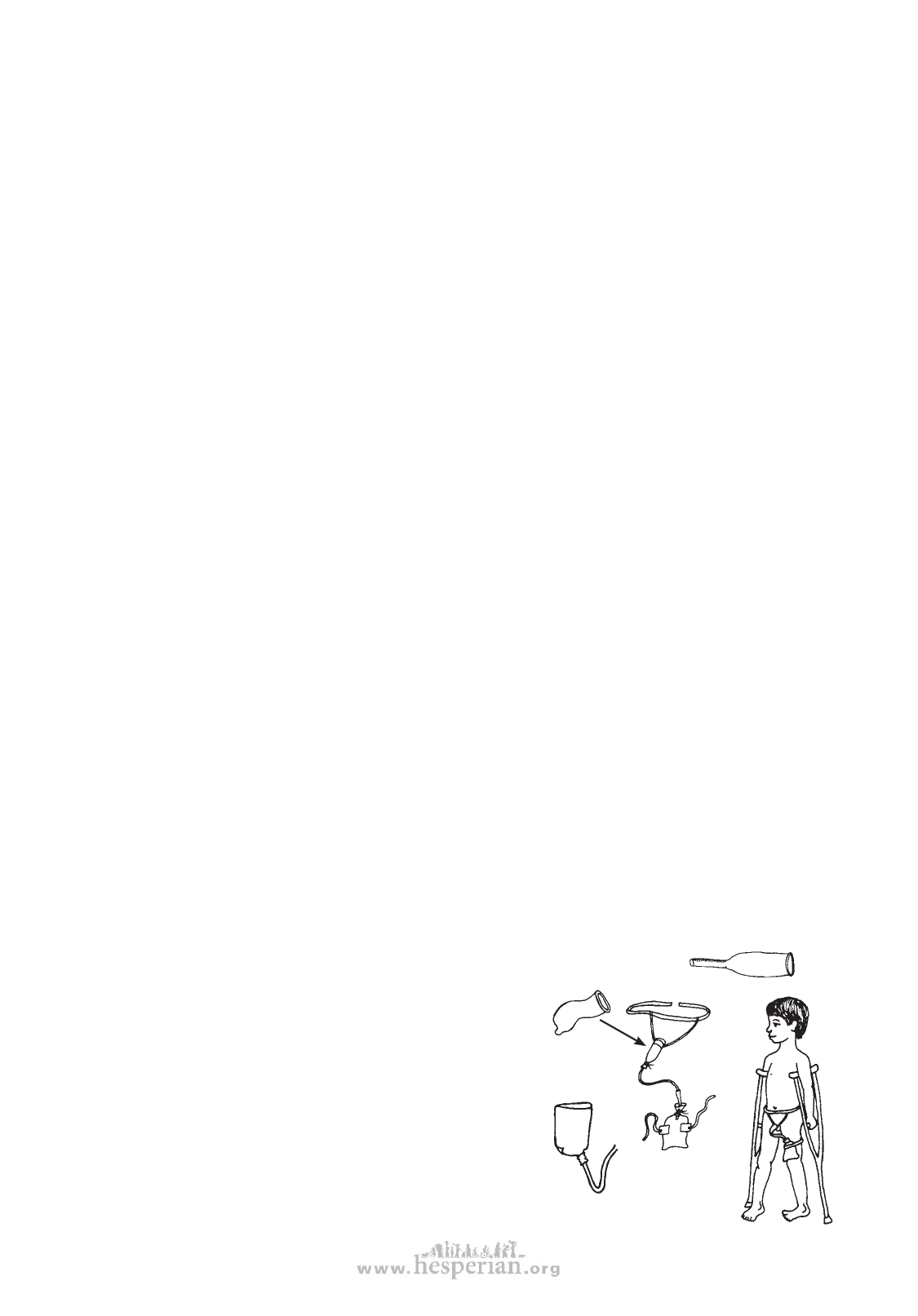
URINE AND BOWEL MANAGEMENT
3. FOLEY CATHETER (fixed catheter): With this method, the catheter is left in all the
time to drain the urine from the bladder continuously. A Foley is often used immediately
after injury, and in some cases, for many months or years. The catheter connects to a
collection bag that can be attached to the leg and worn under the clothes
In many areas this is the easiest method because other supplies are difficult to get.
However, a Foley can cause many problems, including:
• Bacteria can get into the bladder, causing a high risk of infection.
• Continuous bladder irritation can cause bladder stones to form.
• The catheter may cause a sore on the underside of the penis through which urine
leaks. This may need surgery to correct.
If you have tried other methods unsuccessfully or no other equipment is available, a
Foley catheter may be the only choice. To prevent complications it is very important
that it be used carefully:
• Always wash your hands well before touching the catheter.
• Clean the skin around the catheter with soap and water at least twice a day and
after each bowel movement.
• Do not disconnect the collection bag except to empty and wash it. Wash it out
with soap or bleach (Clorox) and water once a day.
• If the catheter must be clamped, use a sterile plug, never a glass ampule (small
bottle). It may break and cause injury.
• Keep the collection bag below the level of the bladder to keep the urine from
flowing back.
• Tape the catheter to the leg when in a wheelchair. Boys should tape the catheter
on belly when lying down.
• Check regularly to make sure the urine is emptying and that the catheter is not
plugged up. Avoid sharp bends or folds in the tubing.
• When turning, lifting, or moving the person, remember to move the bag too. Do
not let it pull at the catheter or stay under the person.
• If the catheter gets plugged up, take it out, squirt boiled water through it, and
put it back. Or use a new one. In emergencies, you can squirt a little (cool)
boiled water back through the catheter while it is in place. Use a sterile or very
clean syringe.
207
4. CONDOM CATHETER: This is a practical method for men
and boys who cannot control their urine. It can be used in
combination with triggering, to avoid accidental wetting.
A condom catheter is a thin rubber bag that fits
over the penis. It has a tube that connects to a
collection bag. They come in different sizes.
If condom catheters are too costly or not available,
a regular condom (‘rubber’, ‘sheath’, or ‘prophylactic’
for family planning) can be attached to the collection
tube with a rubber band or tape.
Or a thin, very clean plastic bag can be used. Or,
on a child, use the finger of a rubber glove (or a
‘fingercot’).
regular
condom
polyethylene bag
condom catheter
disabled village children